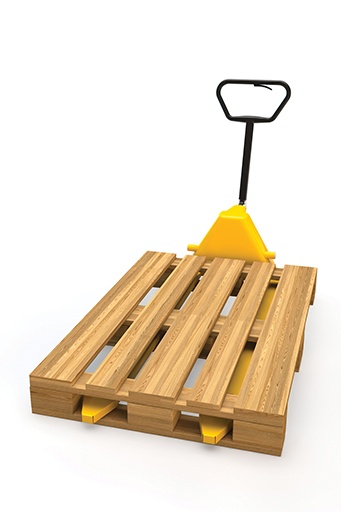There are also situations within a wide-format printing facility where employees will be working in an awkward position for a prolonged period. To avoid stiffness and soreness, they should take one-minute stretch breaks every so often.
Employees who have to lift should be in good physical condition beforehand. Strengthening their stomach muscles, maintaining a healthy weight and increasing their flexibility will in turn improve their ability to lift.
Tools for the job
Employers, meanwhile, may need to invest in additional moving equipment, such as a dolly, or other assistive devices. Further automation of processes might involve a conveyer, a pallet truck, an electric or hand-powered hoist or a forklift, such as for pallets of printable substrates.
Heavy loads on a hand truck should be secured with straps. These attach to the back of the hand truck and wrap around the load to prevent it from falling off, particularly when being lifted to a greater height or up a flight of stairs.
‘Team straps’ wrap around the bodies of two or more people, in a crisscross fashion along their backs, and then are secured to the shared load. They reduce the risk of a back injury when bending down to pick up a heavy load.
Back-support belts strap around the waist. Some also include crisscrossed suspenders that strap over the shoulders. When tightened to fit the employee’s waist, the belt will brace the abdominals and support the spine.
“Employees have a responsibility to follow their training and obey the rules for lifting their supervisors and managers have established,” says Kinter. “This means using safety equipment the way it is intended. They should also co-operate with their employers by informing them of any hazardous handling activities.”
This communication can help determine, for example, if there are any obstructions to free movement that need to be removed or any slippery floors to cover within the wide-format printing facility. Carrying can be limited between hot and cold zones that put additional strain on employees’ bodies, as well as along paths that involve stairs or steep ramps. Lighting may also need to be improved for better visibility.
The key is to always be on the lookout for instances where employees have difficulty performing their daily tasks. Any excessive sweating, puffing, fatigue, poor posture and awkward movements are signs of safety issues. Statistics show one-third of back injuries on the job could have been prevented through better job design.






